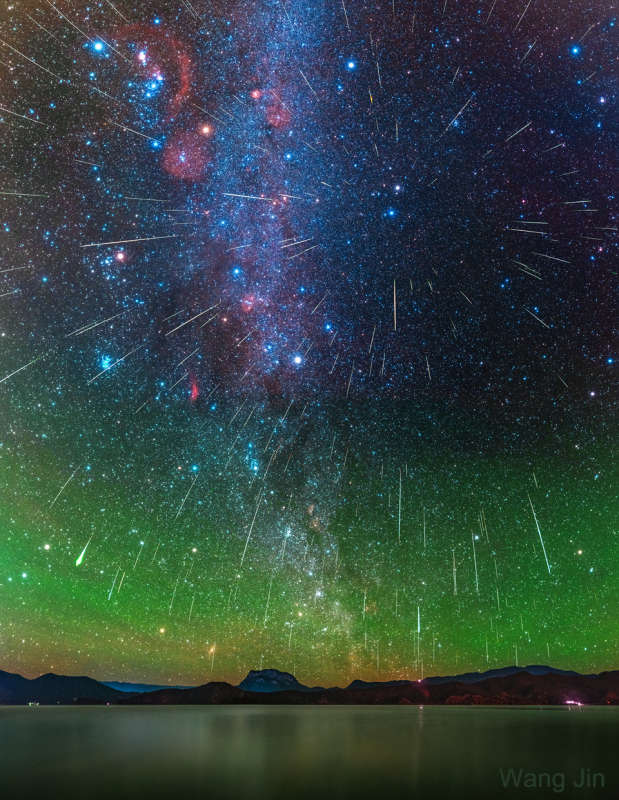Credit & Copyright: Wang Jin
Explanation:
Where are all of these meteors coming from?
In terms of direction on the sky, the pointed answer is the
constellation
of Gemini.
That is why the major meteor shower in December is known as the
Geminids
--
because shower meteors all appear to come from a
radiant toward Gemini.
Three dimensionally, however,
sand-sized debris
expelled from the unusual asteroid
3200 Phaethon
follows a well-defined orbit about our Sun,
and the part of the orbit that approaches Earth
is superposed in front of the
constellation of Gemini.
Therefore, when Earth
crosses this orbit, the
radiant point of
falling debris appears in Gemini.
Featured here, a composite of many images taken during the 2020
Geminids meteor shower shows over 200
bright meteorss that
streaked
through the sky during the night December 14.
The best meteor shower in November, the
Leonids,
peaks tonight and tomorrow.
Unfortunately,
this year,
dim meteors during the
early-morning
peak will be hard
to see against a sky lit by a bright gibbous moon.
Still, a few
bright Leonid
meteors should be visible each hour.
1999 2000 2001 2002 2003 2004 2005 2006 2007 2008 2009 2010 2011 2012 2013 2014 2015 2016 2017 2018 2019 2020 2021 2022 2023 2024 2025 |
Yanvar' Fevral' Mart Aprel' Mai Iyun' Iyul' Avgust Sentyabr' Oktyabr' Noyabr' Dekabr' |
NASA Web Site Statements, Warnings, and Disclaimers
NASA Official: Jay Norris. Specific rights apply.
A service of: LHEA at NASA / GSFC
& Michigan Tech. U.
|
Publikacii s klyuchevymi slovami:
Geminids - meteor shower - Meteornyi potok - Geminidy
Publikacii so slovami: Geminids - meteor shower - Meteornyi potok - Geminidy | |
Sm. takzhe:
Vse publikacii na tu zhe temu >> | |
